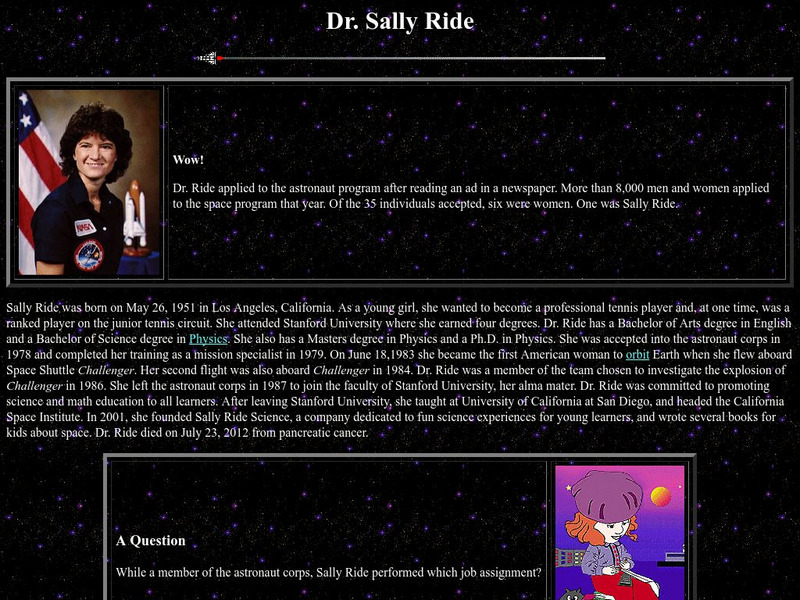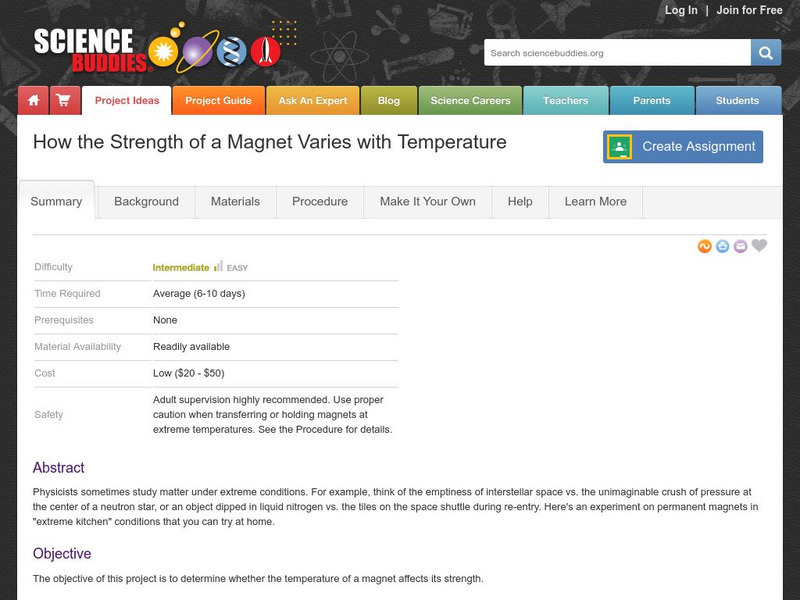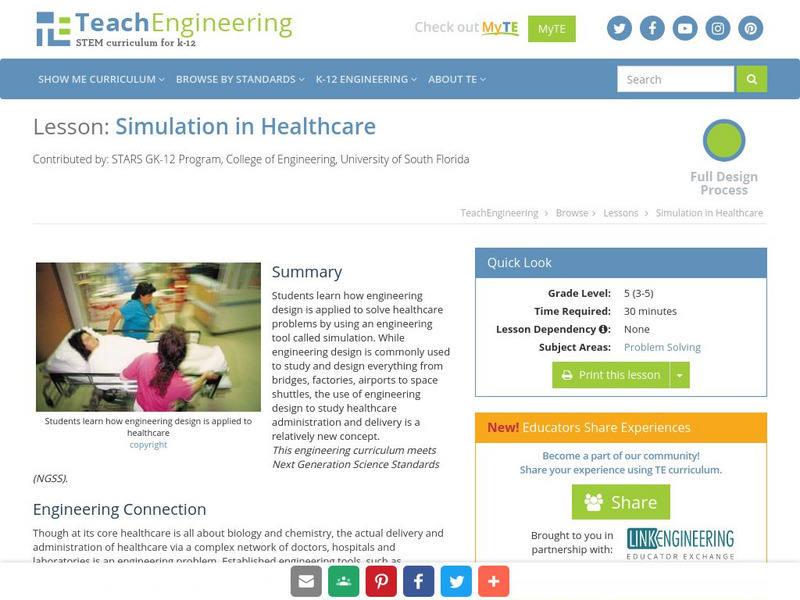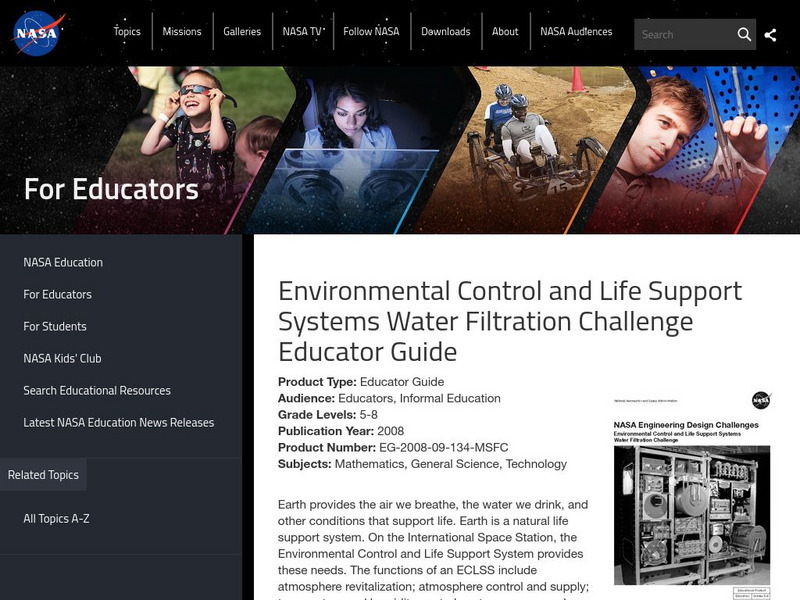Hi, what do you want to do?
Physics Classroom
The Physics Classroom: Momentum and Collisions: The Astronaut Catch
Students imagine that they are hovering next to the space shuttle in earth-orbit, and bump into another astronaut of equal mass. If the two astronauts holds onto each other, then how fast do they move after the collision?
Curated OER
Wikipedia: Natl Historic Landmarks in Ca: Twenty Five Foot Space Simulator
An 85 foot high stainless-steel cylinder at the Jet Propulsion Laboratory used for testing spacecraft in space-like conditions. Ranger, Surveyor, Mariner, and Voyager spacecraft were all tested in this facility.
Curated OER
Wikipedia: Natl Historic Landmarks in Alabama: Neutral Buoyancy Space Simulator
This structure was built in 1955 to provide a simulated zero-gravity environment in which engineers, designers, and astronauts could perform the various phases of research needed to gain firsthand knowledge concerning design and...
Curated OER
Wikipedia: National Historic Landmarks in California: Pioneer Deep Space Station
NASA's Deep Space Network for tracking unmanned spacecraft in deep space was inaugurated when this antenna became operational in 1958.
Other
Gemini Space Craft Instrument Panels
Here is a picture of the Gemini spacecraft instrument panel.
Ohio State University
Friendship 7: A 40 Year Legacy
Online exhibit that celebrates the flight of Friendship 7 manned by astronaut, John Glenn.
NASA
Nasa Star Child: Dr. Sally Ride
Here you can learn all about Sally Ride, the first American woman to orbit Earth. Also, learn a fun trivia fact about Sally Ride!
NASA
Bumping Into a New Friend
On July 4, 2005 a probe collided with comet Tempel 1. This site is for younger children who would like to understand more about this comet or just comets in general. It's designed to look like a story book and is quite basic.
NASA
Nasa: Deep Impact Slideshow
This slideshow chronicles the mission to analyze Tempel 1. It begins with the launch on January 12 and ends with an artist's rendering of the anticipated result. Video and links are also included.
TeachEngineering
Teach Engineering: Linear Equations Game
Students groups act as aerospace engineering teams competing to create linear equations to guide space shuttles safely through obstacles generated by a modeling game in level-based rounds. Each round provides a different configuration of...
Science Buddies
Science Buddies: How the Strength of a Magnet Varies With Temperature
Physicists sometimes study matter under extreme conditions. For example, think of the emptiness of interstellar space vs. the unimaginable crush of pressure at the center of a neutron star, or an object dipped in liquid nitrogen vs. the...
Ohio State University
Ohio State University: Chronology of John Herschel Glenn
This resource offers a chronology of John Glenn from his birth in 1921 to the present, including important events from his early spaceflights, his political career, and his return to space on board the Space Shuttle Discovery in 1998.
TeachEngineering
Teach Engineering: Rocket Power
By making and testing simple balloon rockets, students acquire a basic understanding of Newton's third law of motion as it applies to rockets. Using balloons, string, straws and tape, they see how rockets are propelled by expelling...
TeachEngineering
Teach Engineering: Plot Your Course Navigation
In this unit, students learn the very basics of navigation, including the different kinds of navigation and their purpose. The concepts of relative and absolute location, latitude, longitude and cardinal directions are discussed, as well...
TeachEngineering
Teach Engineering: Simulation in Healthcare
Young scholars learn how engineering design is applied to solve healthcare problems by using an engineering tool called simulation. While engineering design is commonly used to study and design everything from bridges, factories,...
NASA
Nasa Environmental Control and Life Support Systems Water Filtration Challenge
This educator guide provides students with a challenge to design, build, and test a water filtration system, simulating what is used in a spacecraft. Includes background information, lesson plans, and extension activities.















